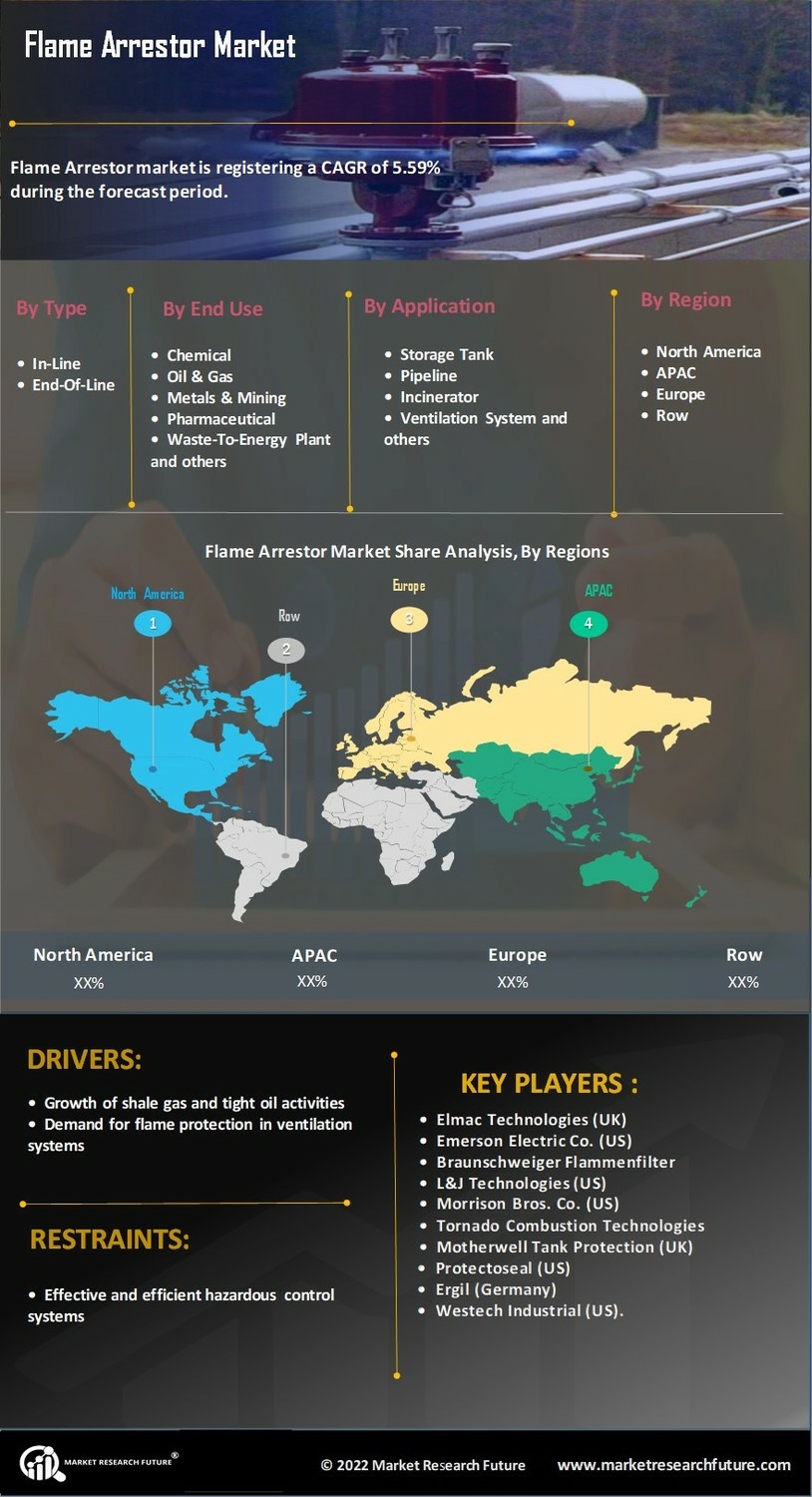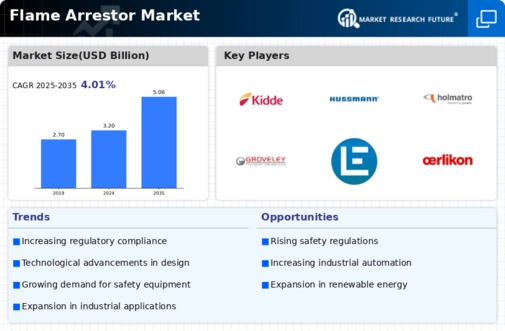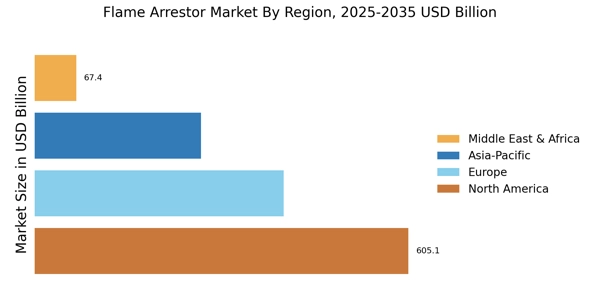Increasing Industrial Safety Regulations
The Flame Arrestor Market is experiencing a surge in demand due to the increasing emphasis on industrial safety regulations. Governments and regulatory bodies are implementing stringent safety standards to mitigate risks associated with flammable materials. This trend is particularly evident in sectors such as oil and gas, chemicals, and pharmaceuticals, where the potential for explosive incidents is high. As a result, industries are compelled to invest in flame arrestors to comply with these regulations, thereby driving market growth. The market is projected to expand as companies prioritize safety measures, with an estimated growth rate of 5.2% annually over the next five years. This regulatory landscape not only enhances safety but also fosters innovation within the Flame Arrestor Market, as manufacturers develop advanced solutions to meet compliance requirements.
Growing Awareness of Environmental Safety
The Flame Arrestor Market is also benefiting from a heightened awareness of environmental safety among industries. As companies strive to minimize their environmental impact, the implementation of flame arrestors becomes increasingly vital. These devices not only enhance safety but also contribute to reducing emissions and preventing environmental contamination in the event of a fire. Industries are recognizing that investing in flame arrestors aligns with their sustainability goals and corporate social responsibility initiatives. This growing focus on environmental safety is expected to drive market growth, with an anticipated increase in demand for eco-friendly flame arrestor solutions. The Flame Arrestor Market may witness a growth rate of around 5.5% as companies prioritize both safety and environmental stewardship in their operations.
Rising Demand from the Oil and Gas Sector
The oil and gas sector is a significant driver of the Flame Arrestor Market, as it presents unique challenges related to flammable gases and liquids. The need for effective safety measures in this sector is paramount, given the high risks associated with exploration, extraction, and transportation of hydrocarbons. Flame arrestors are essential components in preventing the propagation of flames in various applications, including pipelines, storage tanks, and processing facilities. The market for flame arrestors in the oil and gas industry is projected to grow at a rate of 4.8% annually, driven by ongoing investments in safety infrastructure and the increasing number of exploration projects. This trend underscores the critical role that flame arrestors play in ensuring operational safety and compliance within the sector.
Expansion of Chemical Processing Industries
The expansion of chemical processing industries is a key factor propelling the Flame Arrestor Market. As these industries grow, the need for effective safety measures to manage flammable substances becomes increasingly critical. Flame arrestors are essential in preventing the spread of flames in chemical plants, where volatile materials are handled. The market is expected to see a growth rate of approximately 5.0% as chemical manufacturers invest in safety technologies to protect their facilities and personnel. This trend is further supported by the increasing complexity of chemical processes, which necessitates advanced safety solutions. The Flame Arrestor Market is likely to benefit from this expansion, as companies seek to enhance their safety protocols and comply with evolving regulations.
Technological Innovations in Flame Arrestors
Technological advancements are playing a pivotal role in shaping the Flame Arrestor Market. Innovations in materials and design are leading to the development of more efficient and reliable flame arrestors. For instance, the introduction of advanced composite materials enhances durability and performance, while smart technologies enable real-time monitoring of flame arrestor functionality. These innovations are expected to improve the overall safety and efficiency of industrial processes. The market is witnessing a shift towards automated systems that integrate flame arrestors with other safety equipment, thereby streamlining operations. As industries increasingly adopt these technologies, the Flame Arrestor Market is likely to see a compound annual growth rate of approximately 6.5% over the next few years, reflecting the growing demand for enhanced safety solutions.


















Leave a Comment